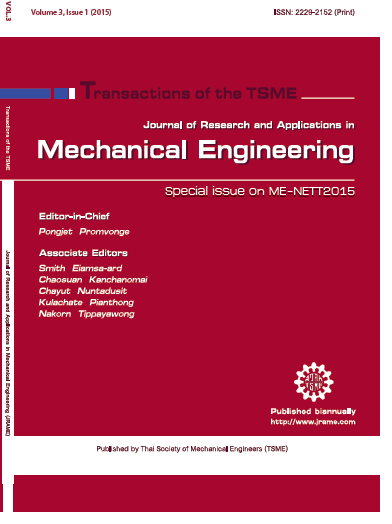Effects of flow on performance of a single‐side‐branch type silencer
Main Article Content
Abstract
This paper presents the performances of single-oside branch type silencers. The experimental apparatus is shown schematically in Fig. 1(a-c). Figure 2(a) shows the visualized distributions of sound pressure level measured in the branch tube for the fr2 and fr3 components. Pressures form the maximum and minimum alternately along the tube axis, exhibiting the distinct wave phase except the vicinity of the open end that is the flow verge zone. It is seen that the stable standing waves are formed longitudinally with the natural quarter-wavelength mode, although the pressure distributions have variations in the radial direction too, because the sound wave should not enter the tube inside as a fully plane wave. The pressure components having no contribution to the tube resonance are no longer distributed in the way of bringing forth the longitudinal clear phase. The low-level contour maps represent the existence of the weak sound fields in the branch tube, and their irregularity suggests that pressure distributions differ in the circumference direction too. The pressure variation in the direction of the duct axis, which can be observed close to the tube open-end, may be related to pressure fluctuations originated by the flow excitation.
Article Details
This work is licensed under a Creative Commons Attribution-NonCommercial-ShareAlike 4.0 International License.



